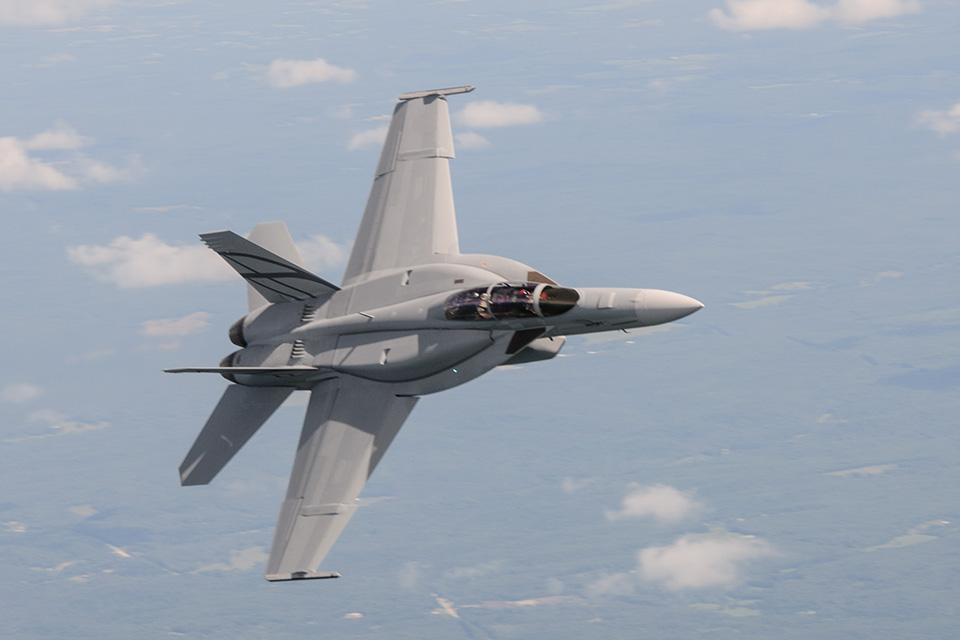
OPINION: This week’s SeaAirSpace convention comes at a challenging time for the US Navy, which faces criticism about everything from its lack of strategy to subpar readiness. Lost in the wave of proposed solutions, however, is a fix to the growing shortfalls of naval airpower.
Aircraft are increasingly important to counter threats posed by the People’s Liberation Army, which include proliferated sensors and thousands of precision weapons able to reach more than 1,000 miles from China’s coast, its long-range bombers, or illegally-created maritime features. Diluting and complicating Chinese attacks will demand that US naval forces distribute across the Western Pacific and concentrate their fires against enemy ships and facilities from a distance. Aircraft are essential to achieve this theater-wide reach as well as provide targeting and communications in what are likely to be degraded electromagnetic environments.
Navy and Marine Corps aircraft conduct the lion’s share of naval combat missions and cost nearly as much per year to buy and maintain as the fleet’s ships. But today’s naval air portfolio is ill-suited for highly distributed operations in contested areas. As noted by numerous studies, Navy and Marine Corps strike-fighters are largely optimized for the relatively short-range missions they flew during the last two decades in mostly permissive Middle East airspace. And they are complemented and supported by manned surveillance, command and control, and patrol aircraft that also lack the endurance and survivability to operate in high-threat areas.
The Navy plans to extend its reach with the carrier-based MQ-25A unmanned refueling tanker and by investing in longer-range weapons. These are good initiatives, given that new tactical aircraft are more than a decade away — but ultimately insufficient. Each MQ-25A will only enable two strike-fighters to reach 1,000 miles from their carrier, requiring more than a dozen to support a carrier’s worth of fighters. And longer-range missiles will generally be larger and more expensive than today’s weapons, reducing the number the Navy could buy and aircraft could carry.
These band-aid solutions are better than nothing, but ultimately don’t address the full problem. With time and money both running short, fielding a force to deter Chinese aggression will require a new approach to naval aviation.
The main impediment to a more effective naval air portfolio is the walls between its various communities. By treating the carrier air wing as a self-contained weapons system, its capacity to attack at long range is curtailed by the carrier’s need to host MQ-25A tankers, E-2D Hawkeye battle management and targeting aircraft, and anti-submarine helicopters alongside its strike-fighters. Some of these enabling platforms or their capabilities could be provided from outside the carrier to free up space for tactical aircraft.
For example, although MQ-25A tankers likely need to fly from the carrier with their customers, some E-2Ds could operate from shore bases in Guam, Japan, or Australia that are outside high-threat areas and use Air Force aerial refueling to rendezvous with US naval forces. To monitor areas between E-2Ds and Chinese forces, carrier strike groups could rely on a combination of commercial and military space surveillance and uncrewed Navy aircraft such as land-based MQ-4 Tritons from Guam. This approach would also help mitigate the vulnerability of slow, radar-emitting E-2Ds to detection and attack.
Another opportunity is emerging in the Marine Corps, which recently began deploying uncrewed MQ-9A Reaper aircraft. Although focused initially on surveillance and targeting, the MQ-9 recently demonstrated its anti-submarine capability and could be employed by Marines to establish and monitor sonobuoy fields under the supervision of operators on P-8A Poseidon maritime patrol aircraft. MQ-9s could operate forward from expeditionary airfields where they would be more expendable than manned aircraft; as with the E-2D, this approach would reduce risks to manned aircraft while enabling operators to manage missions.
Reducing barriers between Marine and Navy aircraft could increase the offensive capacity of naval forces at sea as well. Judging from reactions to the UK Royal Navy’s Carrier Strike Group 21 deployment, smaller carriers like the HMS Queen Elizabeth and US amphibious assault ships impact day-to-day Chinese decision-making and could free up US supercarriers to focus on preparations for higher-end warfare. Moreover, in combat, short-takeoff jets from smaller carriers could provide air defense for carrier strike groups and allow longer-range strike fighters to conduct offensive attacks.
Over the next five to ten years, breaking down stovepipes could enable new capabilities that affordably improve naval aviation’s reach and capability. For example, the Navy recently adopted the Marine MV-22B Osprey as its new carrier on-board delivery aircraft. With a range of more than 1,000 nm and 6,000 lb payload, CMV-22Bs operating from amphibious ships could be equipped to conduct some missions of today’s MH-60R, which lacks the range and endurance to engage submarines before they close enough to attack US forces. Similarly, a surveillance and strike variant of the MQ-25A could extend the carrier air wing’s reach autonomously or under the supervision of a strike-fighter pilot.
The Navy is facing an array of challenges as it assumes the primary role for dissuading and deterring aggression by China in the Western Pacific. With budgets likely to remain constrained, every element of the naval force will need to contribute. To retake the high ground at sea, naval and Congressional leaders will need to reimagine Navy and Marine Corps land and sea-based aircraft as a unified force.
Bryan Clark is a Senior Fellow at the Hudson Institute. Timothy A. Walton is a Fellow at the Hudson Institute.